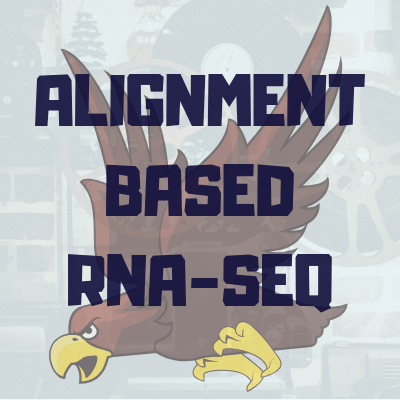1
result
•
updated 5.6 years ago
by
Istvan Albert
 Alignment Based RNA-Seq
Alignment Based RNA-Seq

Alignment Based RNA-Seq
RNA-Seq differential expression with alignments and using three different statistical methods.
A common RNA-Seq data analysis approach is one where sequencing reads are aligned with a "splice" aware aligner.
In this recipe we run follow the concepts presented in chapter:
https://www.biostarhandbook.com/rnaseq/rnaseq-griffith-data.html
and produce differential expression results with three different statistical methods: deseq1, deseq2 and edgeR
Copy recipe
You need write access to the
project
to edit.
Recipe Interface Builder
Click the buttons on the right to create new fields.
